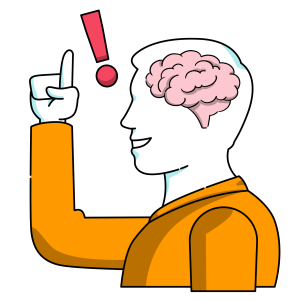Explaining the Dual Coding Theory
Effective learning is key to success, satisfaction, and efficiency, isn’t it? Research has long investigated how to maximize learning and the capabilities of our brain. One theory that hypothesizes the expansion of knowledge retrieval states that visual cues improve recall. It is called the Dual Coding Theory.
What is Dual Coding Theory?
Within the theory, there are three different types of processing. Representation is undertaken when verbal or nonverbal representations are directly activated. We speak of referential processing when a correlation between activation exists. Lastly, when representations are activated within the same verbal system, we speak of associative processing. In most cases, all three forms are subconsciously required when dealing with a particular task.
Who invented it?
Allan Paivio came up with the theory in 1986 hypothesizing that visual stimuli are dually coded in the brain to give it an advantage of the text stimuli. Since then, various experiments have supported his notion and expanded the importance of imagery in cognitive activities.
What are the benefits?
 The variety of fields in which the theory can be applied is significant. Dual Coding is not only applied in regards to problem-solving and concept learning but also inhibits significance in spatial intelligence, mnemonics, and language.
The variety of fields in which the theory can be applied is significant. Dual Coding is not only applied in regards to problem-solving and concept learning but also inhibits significance in spatial intelligence, mnemonics, and language.
For example, Dual Coding Theory applies when creating explainer videos using mysimpleshow because of the combination of text and images used. The picture superiority effect also relates to this psychological theory and why explainer videos are so memorable.
How exactly should I interpret the theory?
Imagine you are are a doctor and you want your patients to understand the different nutrients they are required to take. Knowing about the dual coding theory provides you with the knowledge that using images will help your patience sort the information in visual representations. The visual cues you are promoting them with likely also creates a verbal label. What happens is that the patients store the concept of the different nutrients as images and verbal cues. This increases the chance that when the patient later tries to recall the information it will either appear as the image or word individually or together. The chance of remembering the information is enhanced and more effective learning can occur.
